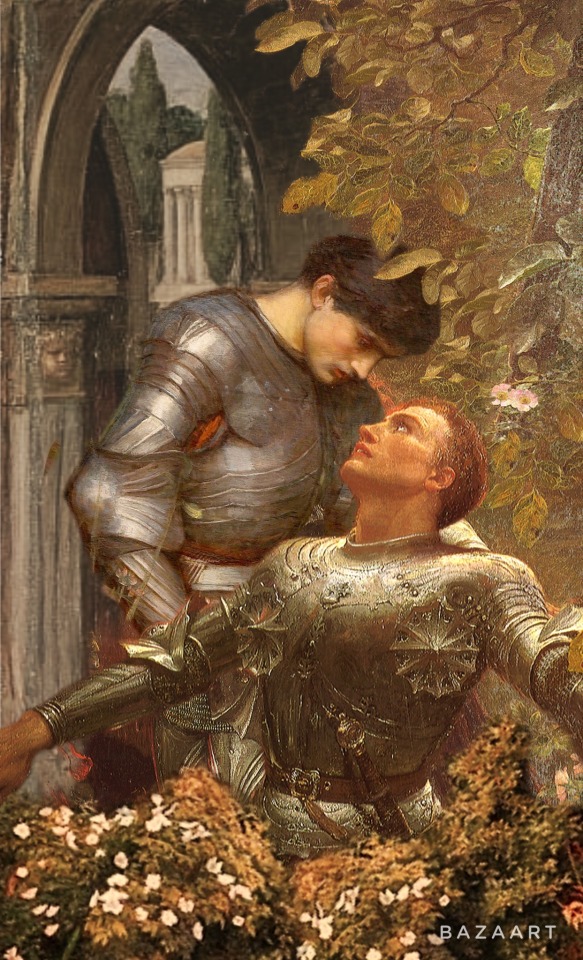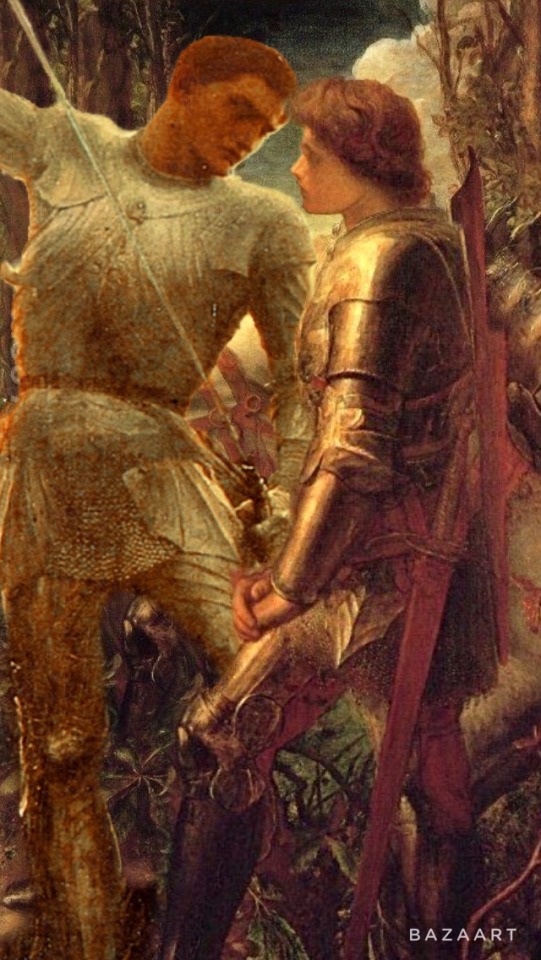Most Of Us Have Heard Of The Red Car Game. You’re On A Road Trip, You’re Bored, You Start Looking
most of us have heard of the red car game. you’re on a road trip, you’re bored, you start looking for red cars to do something.
and then they’re everywhere. you notice them nearly every few minutes.
there aren’t suddenly more red cars now, of course. you were seeing them already, but you weren’t noticing. you weren’t looking.
I am noticing things.
there is a plant I notice everywhere now, a small bushy plant in suburbs, along streets, by shops on the highways. dwarf umbrella bush is what the internet tells me when I look for it’s name. I did this because I wanted to know why,
every time I ever saw it, every place,
it was always dying. always the leaves turning yellow, the branches small and scraggly. inside out - nitrogen definitely. their soil drained.
I am noticing how many of these landscaping plants are yellowing, how small and sickly they look in just a few years. I am noticing how often the grass outside the house is replaced when it once again turns brown and dry, how the type never changes and the cycle starts again. I am noticing how the unmowed, unkempt spaces on lakesides and roadsides look more alive than this. how the preserve I grew up next to was miles of “messy” unmanicured nature and the ground was covered in leaves instead of grass and there was life.
I am noticing the birds that come by the lake. there was a flash of blue wings and red chest - eastern bluebird, male, relatively common. I had never seen one before. there is a family of ducks that appear every spring; i cannot say if it’s successive generations or different ducks, but I can always look forward to ducklings. there are little brown birds with white heads whose names I do not know - are they some kind of piper? why don’t I already know?
why is it so hard to learn about my native plants (accurately, that is)? why are so many gardening sites littered with people who think a plants value is based on how pretty or useful it is to them, who think a tree shedding leaves is “messy”?
why is knowing about the world we live in so… odd? why is it a hobby and not vital knowledge? I learned about polar equations. I taught myself about mycorrhizal networks and species of insects.
(did you know there are shiny green bees? a special species of wasp pollinating figs? that white flowers bloom at night for moths? do you know? have you looked?)
I cannot look at a lawn and see life anymore. it is a wasteland, devoid of life, dying slowly itself. everywhere is grass, grass, doused in water that runs over into storm drains, soaked in fertilizer and pesticides and a hundred other poisons and sending one clear message:
this is a place of death. life is not welcome here.
I do not think I could live in a city. too loud, yes, too busy, yes, too many people, yes, but the plants would bother me. a tree allotted only a convenient square, surrounded by dead stone and metal.
a forest cleared for this, for burning asphalt streets and racing cars and shops whose bathrooms are “for paying customers only”.
this is a place of death. life is not welcome here.
and now I am noticing.
More Posts from Mr-sheridan and Others








I’ve been making gay knights (and ladies) collages on my phone at work
(Part two)
Mine also peed everywhere? Just be aware of that because I very much was not and after handling my rats I very much often smelled like pee. Not sure if it's a male rat thing but I searched it up and rats apparently can't control their bladder so they just continuously leak pee...
Some things I wish I knew when first getting a rat:
You don't need to spend hundreds of dollars on a cage. Rat owners get so pissy over getting name brand fancy cages that can survive 12 world wars when you can actually just stack some cheap larger rabbit/guinea pig/ferret cages. I put a $60 dollar cage on top of my fancy ass $200 ferret one and my rats love it. No injuries or spontaneous exploding into smithereens like rat owners think will happen. I line the sides with cloth and it helps a lot.
If you're American, Oxbow is your friend. I used them with my rabbits years ago when I had them and they're great.
DIY decorations are fun but it gets exhausting after a while. If you want to play it safe, just using hides, hammocks and chew toys work!
All natural cages are cool if it's like an aesthetic thing but in reality they rot, get stinky and gross very fast. Very nasty and smelly.
Rats DO NOT like chew toys for cats or dogs. They love paper, wood, cloth, sticks, pumice, etc.
A rat injuring another rat is not by default always aggression. Only time I've seen it happen is either 1) They're sick/in pain, super grumpy and you need to get them to the vet or 2) You're still bonding them and someone got angry because they're still strangers. Best to rule it out both before neutering or seeking other options for aggression.
It's gonna be such a funny mess when Donald Trump dies of a stroke on April 1st, 2024.
Naturally everybody will think it's fake because of the date only to lose their minds (both positively and negatively based on their opinion of trump) when realizing it's real
There will be massive celebrations in the streets and on social media and lots of predictable "don't speak ill of the dead" discourse about those celebrations
Weird evangelicals will pull some weird number trick talking about how Jesus was conceived on April 1st and that makes Trump a sort of messiah and people will make fun of that
The Republicans (after they're done with the faux-sadness and faux-outrage) will stomp over each other to be his successor but none of them will succeed. They'll tear each other apart and have no single nominee for the November elections.
There will be discourse about if Biden and the living former presidents should go to his funeral (they won't, he was a traitor insurrectionist)
The Ukraine-Russia War immediately goes in favor of Ukraine as morale in the Kremlin is reduced. China similarly backs off from its threats on Taiwan.
Ten thousand new memes are made, some sticking around for years to come.
Not a month later a bunch of unofficial biographies of Trump hit the bookshelves, many with new details about just how awful he was.

Sure I could try the shoelaces thing, or I could just advertise I'm on tumblr on my water bottle.
How To Keep Your (Found) Family Happy
A friend posted a cartoon about weaponized incompetence on another website and talked about how every family has this. In fact, most groups of humans have run into this at some point, it's pretty normal for humans to try to find a way to take the easiest route (even if it means more work for others).
Despite all that, I've been with the same person since 2001. We've been married most of that time, had four kids together, and moved countless times as we restarted jobs, hunted promotions, and switched career fields. And we've managed to avoid most of the pitfalls. Here's how my spouse and I have avoid fights, weaponized incompetence, bitter feelings, and feeling neglected in our relationship for over 20 years (Hint: there's a lot of communication going on)... P.S. These are all very family/relationship-centric but you can absolutely adapt them for the workplace, school, or anything else.
MAKING CHOICES AHEAD OF TIME ... the menu is made at the start of the month, money is allocated before major events, we plan trips sometimes years in advance. All of that reduces the choice making later and is one less stress to handle. This is purely a decision making fatigue thing, if you have to make a decision, it requires brain power, and after a long day you'll have none. So why not sit down on a quiet day and make all the decisions you need to make for the next week? Poof! Brain power is freed up and there is less stress!
MONTHLY & WEEKLY CALENDAR SCRUBS... we sit down and make the menu around the first of the month, and we fill in the calendar with schedules so we know which days someone will be too busy to do things like cook, wash up, or something else.
DAILY CHECK-INS... whoever is home together in the morning does a morning devotional (yoga, dance time, scriptures, motivational quote, prayers, whatever works for you) and review what's happening so everyone is tracking major tests, work meetings, stressors, ect. Then we try to have dinner together if possible (even if it means eating at 5) and then a bedtime check-in before light's out (usually scriptures, prayers, and chatting, then bedtime stories for the littles). If people are working from home, we might have lunch together too. That means we have 2-4 planned meetings a day so we can course correct. -> If you're not religious, don't stress it. Pull out some Terry Pratchett quotes, favorite poems, pick a theme song for the week and dance to it. Just give you and your people five minutes to do something happy together. -> If this is at work this might mean a team meeting at the start of the day or a 12 minute check-in at 1:30 when everyone is back from lunch. The goal is to make sure everyone is on schedule for what they need, haven't run into an emergencies, and no one has questions. A supported work team gets more done.
SPENDING LIMITS... we got married in college when we lived off college stipends of $400/m. And we had a kid. Our rule was never to spend $20 without consulting the other person. We never changed that. We discuss everything from birthday presents to grocery lists and when we're getting gas in the cars even though we're much more financially stable. It means everyone spending out of the main accounts is tracking where the money is going so we don't over-splurge.
CHORE SCHEDULES... when we were first married we'd set aside an hour or so to clean the house together. It worked. As the kids got older this got more complicated (they needed to learn how to clean). But now we're at a point where everyone has assigned chores and we put bounties on chores that need to get done and are unassigned. And then we have one cleaning day (usually Friday or Saturday) where we take an hour and all clean the shared spaces. It takes 30-60 minutes to clean the entire house if you have six people working together. Laundry has assigned days for every load. The dishwasher and cooking have assigned days. It works. Everyone helps to the best of their abilities. -> With this is a lot of Adjusted Expectations. My house is not color coordinated with everything in a bin. My family is all neurodivergent. Most our dishes live on the counters because putting them away makes them vanish. This works great for us but might be overwhelming for other people. Who cares? It's our house, we're doing what works for us and the person made about it on Instagram can suck a lemon. -> If you really cannot do chores, cosplay it. Roll the dice and make it a game. Set a timer. Bribe yourself. Make it work for you.
ONE-ON-ONE TIME... not just for me and hubby, but for parents and kids. We try to make sure everyone gets some alone time where they are the focus of attention and we can check-in and make sure their emotional needs are met. Kids need a space to vent. Adults to a space to not be parents. -> This is super important for friendships too. Make time for people in your life! -> At work, this means managers need to make time to talk with their employees, check-in, and assess who needs things (and consider the people's needs first, not the CEO's bonus)
SCHEDULED DOWNTIME... usually this is Sunday for us (the Sabbath day for our religion), but it can be whenever, and we might have more downtime scheduled on a stressful week than in an easy one. The goal here is to make sure everyone gets time to not work, not lead, not think, and just chill. They can play, listen to music, nap, whatever their brain needs, and they can do it without upsetting anyone or feeling guilty because it's part of the schedule. -> In an office this would mean not lean staffing, maybe having an early release day once a week (or a late start) or long lunches. Give your people space to zone out and chill so they can come back refreshed. -> Quiet Quitting only exists because management is trying to exploit their staff. Don't be that boss. (P.S. Join Your Union)
SOME THINGS DON'T HAPPEN... our kids are limited to one after-school activity a year and one AP class for high schoolers. We've tried other ways and found it generates too much stress. I limit projects I take on because I have a set quitting time, even though I work from home. My husband passes up on some away-from-home events with friends because we prioritize family time. Figuring out that balance is something you have to decide as a family. What works for one person won't work for all. -> In business this means doing sustainable, slow growth over rapid booms that overextend and hurt the system. Stop looking for the short term boost when long term is better.
ADAPT TO WHAT YOUR GROUP NEEDS!... this is the most important one, because what we've done over the years has changed in reaction to the needs of people around us. My kids in college need something different than the one starting middle school. My team at the lab needed something than my team at a newspaper. If you have a bunch of introverts, they probably don't want a dance party, they want a three minute meeting with a heads up about any major disturbances and then ten minutes of silence to prepare their souls for any human interaction. Do what works.
Hiii I once heard a saying that goes something like this: "it isn't your thoughts that make you who you are, it's whether you decide to act on them that does" or something along the lines of that
hey a reminder that sexual intrusive thoughts are not sexual fantasies. sexual fantasies are about what you desire and sexual intrusive thoughts are about what scares you the most and your intrusive thoughts say a hell of a lot more about what you DONT want than about what you do. youre okay and youre safe and youre not whatever it is your intrusive thoughts want you to think you are. youre fine.
how do you consistently draw the same character without it looking weird or off every different time?? also how do i coordinate faces, i always make the eyes too far apart or too big or too small or make the mouth too close to the nose or chin edge. If you have any advice I'd really appreciate it since it looks like you have your art shit figured out 🙏
Oh man SO so much of it is just practice, and you're not alone! I honestly think everyone struggles with a sort of "generification" of their characters' features the more they draw them, even seasoned professionals. There's a tendency to just sort of average everything out into an unrecognizable mush over time, and it takes a lot of conscious effort to push back against that.
Here are a couple tips and tricks that I've found to be helpful over the years:
Make turnarounds and model sheets. There's a reason animation/game studios do this, and it is because we are all still bad at drawing a consistent face. Despite being gainfully employed. What are we, graphic novelists?? We wish. Anyway it's a great way to familiarize yourself with your character's face from multiple angles, and it gives you a single source of truth to return to anytime you need a refresher:


Gather real-life reference. Anytime I'm designing a character I'm pulling together a ton of reference of actual people who look, to some degree, like the character in my head. It's always a collection of analogues, never just a single person, but it can be a great cheat sheet for understanding how your character might move, emote, etc:


Make a 3D model. I know it seems daunting, but with the advent of programs like Blender and Nomad Sculpt it's becoming remarkably more accessible. Heck, even James Gurney was sculpting maquettes out of clay for Dinotopia back in the day! It doesn't have to be particularly detailed—just a sort of proportionate lump will do—but it's another great way to have dynamic reference that you can rotate and light accordingly:


Practice, practice, practice. Make expression sheets for your character! Either right there on the spot, just start drawin' expressions, or you can slowly collect drawings of your character that you like, as you draw them, and compile them all in one place for your own reference. Need to draw your character's head from a weird angle? Maybe you've already drawn it before and you can copy your own homework! Doesn't count as stealing when the call's coming from inside the house 😎

I'd love to pretend there's a magical point where you can just immediately rotate your character's head in your brain like some sort of photorealistic apple in a twitter meme, but a lot of the time it's reference, hard work, and whole lotta repetition. 😐👍🏼
Seeing more and more blogs without a [username].tumblr.com site which means you can only view their blogs in tumblr.com/[username] mode, and I realized just the other day that nowadays you have to manually go to your blog settings and toggle the "enable custom theme" switch to have a browser site activated.
I REALLY recommend activating this! Especially if you're an artist or if you have a themed blog, like if you reblog fanart for a specific fandom or ship. First and foremostly you can change the whole theme if you want to, you can really just go wild with building your personal aesthetic for your page.
But what I think is even more important, is that you NEED to "enable custom theme" to enable access to your archive! The link [username].tumblr.com/archive doesn't work if you don't have this enabled!
If you post art or archive fanart or fandom content of any kind, letting people access your archive makes it so much easier for people (and yourself) to find older art on your blog or to look for something you drew a while ago that they remember loving and want to look at again.
We talk lots about how on Tumblr old art gets to circulate, and the archive is part of how that works. It's a really useful tool in finding good content that isn't brand new. And especially if you are good at tagging, it's very easy to filter the archive to find ship content or meta or fics, whatever you want to find.
Upsizing clothes! There are a million upcycling tutorials for clothes that are too big, but so few on how to make too small clothes you still love bigger!
Thank you for your suggestion! We all go through weight fluctuations in life, so it stands to reason our clothes should be able to fluctuate with us.
Resizing your clothes used to be a very common practice before the advent of fast fashion. Fast fashion sizing is extremely flawed, especially when it comes to plus size fashion, and we're stuck with a lot of vanity sizing, so it's a good skill to have regardless of whether you're looking to mend something old or buy something new.
How to upsize clothes:
Introduction:
There are many different ways to make a garment larger. The following list is not exhaustive, just a few ideas to get you started.
Grading patterns:
If you're making your own clothes, it's always useful to know how to modify a sewing pattern. The easiest way to adjust a pre-existing pattern to your size is slash and spread grading. First, you need to define which spots on the pattern need extra space. You then cut your pattern in that spot, and slide the resulting pattern pieces away from each other until you've got the size you need. Use paper to fill in the gaps. To ensure the resulting pattern makes for well-fitting clothes, make a mock-up and add, move, or remove darts where necessary to adapt it to your body type.
The image below shows potential slashing lines on a set of standard pattern blocks. Each line is a spot that allows you to add extra space. To read more about this process, check out the corresponding article by Threads Magazine.

(Image source) [ID: a diagram of slashing lines on a pattern block for a dress, bodice, skirt, sleeve, and a pair of pants.]
To make your clothes easier to let out in the future, make sure to provide ample seam allowance when cutting out your pattern pieces. This surplus fabric has several different uses, including giving you some wiggle room for when you need to size up your garment.
Now, let's take a look at pre-made garments.
Lengthening clothes:
A garment that's too short on you is easy to modify. Just add more material!
If it's a skirt or a dress, add ruffles to the bottom. Ruffles are easy to make by hand or with a sewing machine. You could also add lace, or wear the item with an underskirt.
For pants, let down your hem or sew on a new cuff. If this isn't enough, maybe consider turning your trousers into capri pants or shorts.
As for shirts, sewing an extra layer to the bottom edge is the easiest way to go, too. You could even combine two shirts into one to get an extra long shirt.
Another option is to cut your item in two and insert extra fabric between your separated garment parts.

(Image source) [ID: a pair of blue pants with cuffs sewn onto the bottom of the legs to lengthen them. The cuffs are made out of a fabric with a blue and brown geometric print.]

(Image source) [ID: a before and after picture of a red t-shirt that was lenghtened by adding in a patch of colourful fabric at the waist.]
Letting out seams/darts:
Remember how we made sure to have ample seam allowance earlier? When a garment has surplus fabric in the seams and you only need a little extra space, you can undo the seams of your garment and sew them back together again, this time with a smaller seam allowance than before. The Spruce Crafts has a pretty good tutorial on how to let out seams. You won't be able to make major size changes using this technique, but if you only need a few centimetres, this is a good way to go.
A lot of garments also have darts. Darts are fabric folds that are sewn down in strategic places to help the fabric follow the body's curves. If a dart doesn't fit you the way you want it to, then unpick the dart and try on the garment. Either leave the dart open, or pin the dart in place however you want it, then take off the garment again and sew the dart back together.
Be careful not to rip the fabric when using a seam ripper. Also note that removing entire darts may change the garment's fit.
You can also add custom darts to achieve a better fit, but that's a topic for another time.

(Image source) [ID: twelve different types of darts on a feminine bodice block.]
Adding extra fabric to your garment:
If we need to add more room than seam allowance or darts can provide us with, we need to add extra material. Remember those slashing lines we looked at earlier? If you're working with a pre-existing garment rather than a pattern, those are the perfect places to chop up your clothes and add in extra fabric.
Check your sewing stash for fabric that's similar in weight and material to your original garment, or go thrift shopping for an item you could use to upsize your garment. Long skirts and maxi dresses are a great source of fabric for alterations like these!
Lace inserts are also a fun choice to add some room, and if you're working with a knit item, you could even knit or crochet your own custom insert.
Define the area where you want to add extra fabric on your item, and measure how much you need. Draw a straight line on your garment with chalk/soap. Make sure the line doesn't cross any important structural or functional parts of your garment like darts or button holes: refer to the slashing diagram we saw earlier if you're not sure what spot to pick. Cut the line open (or unpick the seam if it's situated on a seam), and add in your extra fabric. Finish off your new seams so they don't unravel later on, and you're done!
You can add straight strips of fabric for extra width or length, or you could use flared panels or even godets to make your item flair out.
Want to see this technique in action? Check out this video by Break n Remake:
Some ideas:
This Pinterest user cut a straight line down the front of a t-shirt and inserted a lace panel to add extra width in the front of the garment.

(Image source) [ID: a blue t-shirt with a panel of dark blue lace added in at the centre front.]
Busy Geemaw cut open the side seams of a shirt and used flared panels to add some extra width in the bust and hip area.

(Image source) [ID: a green and white long-sleeved shirt with a striped flared panel in matching colours inserted at the side seam.]
This person added a panel to the sides of a pair of jeans to give them more space in the hip area. You could easily use a long straight panel or a panel that flares at the bottom to resize the entire garment instead of just the hips, or use a wide piece of elastic for extra stretch.

(Image source) [ID: a side view of a pair of light blue jeans with a dark blue wedge-shaped denim insert running down from the waist and ending above the knee.]
This person added a godet in the back of their shirt in order to get more space in the back.

(Image source) [ID: a blue and white plaid shirt with a white lace godet inserted in the back.]
Blue Corduroy enlarged a pair of shorts by opening up the side seams and adding in strips of fabric.

(Image source) [ID: blue denim shorts with a floral fabric insert at the side seams.]
You don't need to resize the entire garment if you don't want to. For example, One Brown Mom turned this ankle-length skirt with a too small waistband into a well-fitting knee-length skirt by taking advantage of the skirt's flared shape.

(Image source) [ID: a woman wearing a black shirt and a brown tartan knee-length skirt.]
Conclusion:
Throughout our lives, our weight will fluctuate and our bodies will change. There's no shame in this: it's just a fact of life. Therefore, knowing how to upsize an item that is too small for you is a useful skill to learn.
If you want more inspiration, check out these projects by Confessions of a Refashionista, One Brown Mom, and Thriftanista in the City.








old fan art from 2016 to 2017
(looking back, why do i always draw ladybug on the left and cat noir on the right)
-
 ollievion liked this · 1 month ago
ollievion liked this · 1 month ago -
 bugboys-world liked this · 1 month ago
bugboys-world liked this · 1 month ago -
 anrentadashi reblogged this · 2 months ago
anrentadashi reblogged this · 2 months ago -
 astremistry liked this · 4 months ago
astremistry liked this · 4 months ago -
 earthyumgiggles reblogged this · 4 months ago
earthyumgiggles reblogged this · 4 months ago -
 earthyumgiggles liked this · 4 months ago
earthyumgiggles liked this · 4 months ago -
 one-in-a-maxi-million reblogged this · 4 months ago
one-in-a-maxi-million reblogged this · 4 months ago -
 laberrant liked this · 7 months ago
laberrant liked this · 7 months ago -
 pyromanticmaniac liked this · 8 months ago
pyromanticmaniac liked this · 8 months ago -
 specss00 liked this · 8 months ago
specss00 liked this · 8 months ago -
 catching-sun liked this · 9 months ago
catching-sun liked this · 9 months ago -
 piceacamellia liked this · 9 months ago
piceacamellia liked this · 9 months ago -
 hirundinehenri liked this · 9 months ago
hirundinehenri liked this · 9 months ago -
 trenchcoats-in-a-opossum reblogged this · 11 months ago
trenchcoats-in-a-opossum reblogged this · 11 months ago -
 trenchcoats-in-a-opossum liked this · 11 months ago
trenchcoats-in-a-opossum liked this · 11 months ago -
 rainbug-on-a-rainbow reblogged this · 11 months ago
rainbug-on-a-rainbow reblogged this · 11 months ago -
 iamgermanandstuff liked this · 1 year ago
iamgermanandstuff liked this · 1 year ago -
 random-knowone reblogged this · 1 year ago
random-knowone reblogged this · 1 year ago -
 random-knowone liked this · 1 year ago
random-knowone liked this · 1 year ago -
 obnebulant-mogai liked this · 1 year ago
obnebulant-mogai liked this · 1 year ago -
 crabbyjade liked this · 1 year ago
crabbyjade liked this · 1 year ago -
 wolfwillowisp reblogged this · 1 year ago
wolfwillowisp reblogged this · 1 year ago -
 wolfwillowisp liked this · 1 year ago
wolfwillowisp liked this · 1 year ago -
 timeless-orchid reblogged this · 1 year ago
timeless-orchid reblogged this · 1 year ago -
 timeless-orchid liked this · 1 year ago
timeless-orchid liked this · 1 year ago -
 jadetuin liked this · 1 year ago
jadetuin liked this · 1 year ago -
 ephemeral42 reblogged this · 1 year ago
ephemeral42 reblogged this · 1 year ago -
 fandom-url liked this · 1 year ago
fandom-url liked this · 1 year ago -
 i-am-me-i-am-sam reblogged this · 1 year ago
i-am-me-i-am-sam reblogged this · 1 year ago -
 i-am-me-i-am-sam liked this · 1 year ago
i-am-me-i-am-sam liked this · 1 year ago -
 kaerynn reblogged this · 1 year ago
kaerynn reblogged this · 1 year ago -
 the-king-of-lemons reblogged this · 1 year ago
the-king-of-lemons reblogged this · 1 year ago -
 the-king-of-lemons liked this · 1 year ago
the-king-of-lemons liked this · 1 year ago -
 liminaleffort liked this · 1 year ago
liminaleffort liked this · 1 year ago -
 i-kno-who-i-am liked this · 1 year ago
i-kno-who-i-am liked this · 1 year ago -
 barricadeb0i liked this · 1 year ago
barricadeb0i liked this · 1 year ago -
 billybatsonmylove liked this · 1 year ago
billybatsonmylove liked this · 1 year ago -
 thirdstreetcettin liked this · 1 year ago
thirdstreetcettin liked this · 1 year ago -
 ernest-frankenstein reblogged this · 1 year ago
ernest-frankenstein reblogged this · 1 year ago -
 ernest-frankenstein liked this · 1 year ago
ernest-frankenstein liked this · 1 year ago -
 tereszi liked this · 1 year ago
tereszi liked this · 1 year ago -
 speedy-the-sassy-goddess reblogged this · 1 year ago
speedy-the-sassy-goddess reblogged this · 1 year ago -
 speedy-the-sassy-goddess liked this · 1 year ago
speedy-the-sassy-goddess liked this · 1 year ago -
 tarragonthedragon reblogged this · 1 year ago
tarragonthedragon reblogged this · 1 year ago -
 noonetwothreefourfive liked this · 1 year ago
noonetwothreefourfive liked this · 1 year ago -
 onlyherewithtreasure liked this · 1 year ago
onlyherewithtreasure liked this · 1 year ago -
 mossheartlesbian reblogged this · 1 year ago
mossheartlesbian reblogged this · 1 year ago -
 mlq1516 reblogged this · 1 year ago
mlq1516 reblogged this · 1 year ago
